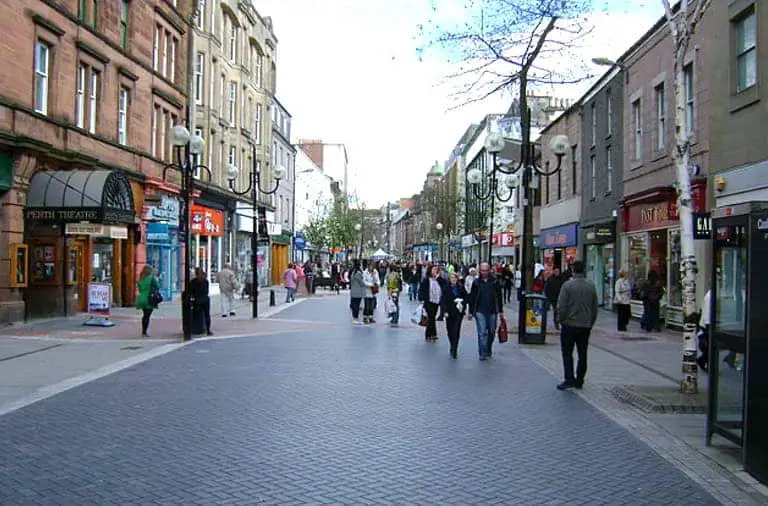Due to changing shopping habits in recent years, the role and function of our town centres are changing. At the same time, housing affordability is poor, and housing need is high in many areas of the country.
In response, the Government has introduced greater flexibility to the planning system. The new legislation allows the conversion of commercial property to be used as residential homes and stops commercial units from sitting empty for long periods.
The planning system can often seem a long and complicated process. In response, the Government has introduced more permitted development rights to make the process easier.
Permitted development rights allow some building work to be completed without planning permission.
This article will give you an overview of the new permitted development rights and how your property portfolio can benefit from these new rights.
Contents
What Are The New Permitted Development Rights?
Several new permitted development rights have been introduced since 2020, which cover a range of uses and circumstances.
On 1st August 2021, a new permitted development right called Class MA was introduced. This allows the conversion of buildings falling within Use Class E (commercial space, office spaces, business, and service use) into much needed new homes, referred to in the legislation as dwellinghouses.
To use this permitted development right, if your scheme meets a set of conditions, you will not need to apply for full planning permission. But you will need to apply for prior approval from your local council.
The following conditions apply to Class MA permitted development rights:
- It can be used to convert properties up to 1,500sqm – anything above this would require planning permission.
- The commercial unit must have been vacant for a period of 3 months (you may need to evidence this).
- The commercial unit must have been in one of the uses within Use Class E for 2 years before submitting a prior approval application.
- It cannot be used for listed buildings or land within its curtilage or most protected land.
- It can only be used to convert to residential use. It cannot be used to convert a change of use to HMOs (regardless of their size).
As part of the prior approval process, your local planning authority will assess the application against:
- Transport & highways.
- Contamination.
- Flood Risk.
- Noise from commercial units which would affect future residents.
- Adequate natural light to all habitable rooms.
- The impact of residential development in industry, waste management, storage and distribution.
- If the proposed conversion results in the loss of a registered nursery or health centre, the impact on the local provision will be assessed.
- If the proposed conversion is located in a Conservation Area, and involves the conversion of part of the ground floor, the impact on the character or sustainability of the Conservation Areas is considered.
In addition to the above, you will also need to be wary of any Article 4 Directions that councils use to block permitted development rights.

Depending on the size, type and location of the scheme, you may be required to pay a Community Infrastructure Levy (CIL) charge to the council.
Office to residential conversions used to be allowed under Class O Permitted development rights. However, offices are now classified as Use Class E, and as such, Class O permitted development rights expired in July 2021.
Instead of using the Class O permitted development rights, Class MA (which is described above) can be used to convert offices into new homes.
You may require a planning application to accompany your prior approval application to deal with some of the consequential building works, such as new windows and doors.
It is important to remember that other permitted development rights may benefit your commercial property portfolios. Such as permitted development Class G, which allows for up to two flats to be converted above a shop or other use under Use Class E.
What Is The Use Of Class?
Planning law puts different uses of land and buildings into other classes. These are known as Use Classes, and significant changes were made to these in September 2021.
But why are use classes important, and what does it mean for your property?
The Use Class of your building has big implications on your plans for any future changes to your property, as different permitted development rights apply to each Use Class.
For example, if you own a shop* or cafe, this is classified as Use Class E. However, under Permitted Development Right Class MA, you can convert a shop or cafe to residential uses subject to certain conditions and limitations.
However, suppose you own a pub or takeaway. In that case, these are now classified as Sui Generis under the use classes, and the same permitted development rights do not apply.
Similarly, you can change within the same Use Classes without the need for planning permission. For example, if you own a property that is being used as a cafe, it can become an office without the need for planning permission. But an accompanying planning application may be required for any building works.
*Note – Shops smaller than 280sqm, which primarily sell essential goods, including food, are classified as F.2 in the Use Classes Order, and where they are at least 1km away from another similar shop. Use Class F.2 does not have the same permitted development rights.
What Do The New Rules Mean?
These new rules mean much greater flexibility for owners and buyers of commercial properties. Still, schemes will need to meet the conditions and limitations attached to the permitted development rights. You must meet these and submit a prior approval application to your local council.
However, the local councils can still refuse prior approval applications, so you should wait for the application to be granted before starting work.
Some critics have argued that the new rules risk the loss of essential commercial property and can negatively impact our high streets.
Whilst this may be true, our changing shopping habits have impacted high streets for many years, and these new rules are an attempt to give them a new meaning and life.
Additionally, many critics of the planning system argue that it takes too long for decisions to be made, and there is a lack of certainty in the system.
Permitted development rights are intended to add greater certainty to the system by removing elements of planning judgements. Instead, councils are supposed to apply the ‘prior approval’ matters in a technical way.
However, the prior approval process still requires your council to approve or refuse an application, so conversion isn’t always guaranteed.
What Are The Benefits For Property Developers And Investors?

These new permitted development rights provide much more flexibility to the owners and potential buyers of unused commercial buildings. In many areas, letting or selling a residential property is likely to see greater returns when compared to commercial property.
This is particularly true in areas where city centres have been declining, and shops and offices have remained vacant for a long period of time.
Rather than see a property lie empty, and miss out on valuable income, you could convert it to more profitable uses.
Importantly, because of the changes to the Use Classes, you can now convert a much wider range of uses into residential properties.
For example, Class O allowed the conversion of offices to new homes, but its use was limited purely to offices. Now, Class MA allows a much wider range of uses, such as shops, restaurants and cafes, offices, light industrial and even creches to be converted into residential units, subject to some conditions and limitations.
The size threshold for Class MA is substantially larger than was previously allowed. The maximum floor space now is 1,500sqm, a tenfold increase on the previous limitations of 150sqm in many cases.
Can I Still Convert The Building If It Is Listed?
You can use Class G of the permitted development rights to convert areas above shops (or other Class E uses) into two flats, even if the building is listed. However, you will need to submit a listed building application to your local authority.
If you want to convert the whole building, you can still convert a listed building in commercial use to residential, but you will need to apply for planning permission and a separate listed building application.
This means that the local authorities will consider your application against their planning policies and other considerations rather than the list of matters considered under prior approval (which we listed above).
Some councils have planning policies that restrict the loss of shops and other commercial premises. These are likely to be a consideration if you have to submit a full planning application.
This doesn’t mean that your application will automatically be rejected; your application could be approved if enough justification is provided for your scheme.
Listed buildings are buildings of special architectural or historical importance. You should be aware that a property you own is listed from the land searches conducted on the property when you bought it.
If you are unsure, you can always contact your local council for further information, or Historic England has a helpful interactive map of listed buildings. Many permitted development rights, such as Class MA, are removed from listed buildings.

